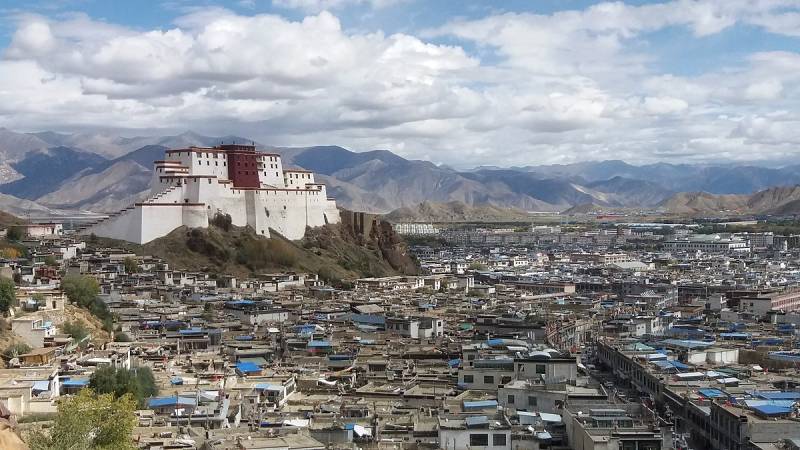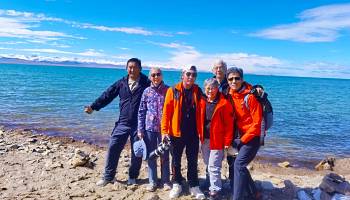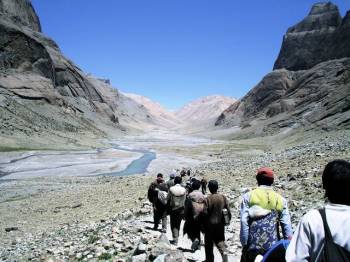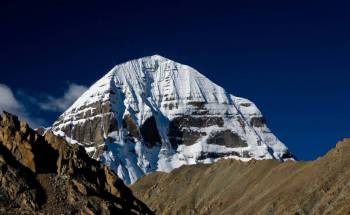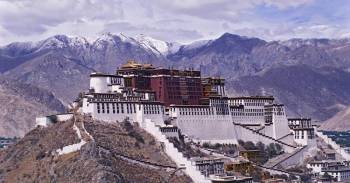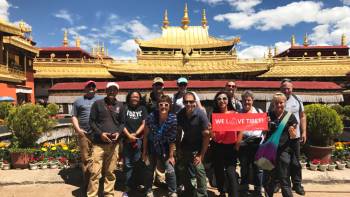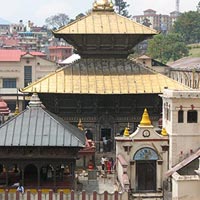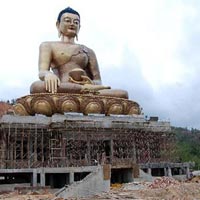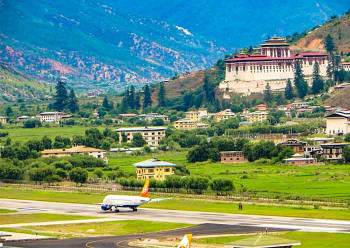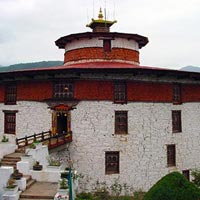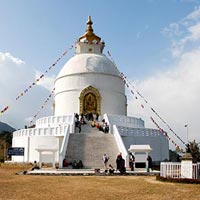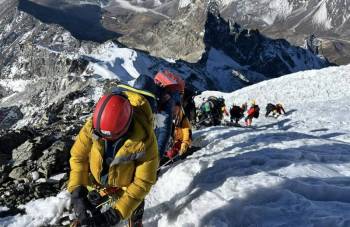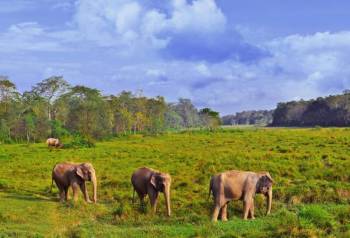aspirationasia@gmail.com - +977-9827621738
- Send SMS Send Email
Duration : 5 Nights / 6 Days
Destination Covered : Tibet, Shigatse, Lhasa
Tour Activities : Trekking
Tour Themes : Hill Stations & Valleys, Religious & Pilgrimage, Culture & Heritage, Family & Group Tours
Price on Request
Tibet, Shigatse and Lhasa Tour Overview
Highlight
Tibet, known as the "Roof of the World," is situated on the Tibetan Plateau in Asia. Renowned for its awe-inspiring landscapes and rich cultural heritage, Tibet stands out for its high altitude, with many peaks exceeding 4,000 meters, including the world's highest, Mount Everest. The region's culture is deeply intertwined with Tibetan Buddhism, drawing spiritual seekers and adventurers alike.
Overview
Tibet, often called the "Roof of the World," is a region on the Tibetan Plateau in Asia, known for its breathtaking landscapes and rich cultural heritage. This remote and mystical land is characterized by its high altitude, with many peaks exceeding 4,000 meters, including the famous Mount Everest. Tibet's culture is deeply intertwined with Tibetan Buddhism, making it a spiritual destination for many travelers seeking enlightenment and adventure.
Lhasa, the capital city of Tibet, stands at an altitude of about 3,650 meters and is one of the highest cities in the world. It is the cultural and spiritual heart of Tibet, home to iconic landmarks such as the Potala Palace and Jokhang Temple. Lhasa's rich history and vibrant atmosphere attract visitors who wish to explore its ancient monasteries, bustling markets, and unique Tibetan customs.
Barkhor Street, located in the old city of Lhasa, is a bustling marketplace and a spiritual pilgrimage route encircling the Jokhang Temple. This vibrant street is lined with shops selling traditional Tibetan crafts, religious artifacts, and local snacks. Pilgrims and tourists alike walk the kora (circumambulation) around the temple, adding to the lively and sacred atmosphere. Barkhor Street offers an authentic glimpse into daily life and spiritual practices in Lhasa.
Drepung Monastery, located at the foot of Mount Gephel in Lhasa, Tibet, is one of the "great three" Gelug university monasteries. Founded in 1416 by Jamyang Choge Tashi Palden, it once housed as many as 10,000 monks, making it the largest monastery in the world. Drepung played a crucial role in Tibetan Buddhism and served as the principal residence of the Dalai Lamas until the Potala Palace was built.
Sera Monastery, established in 1419 by Jamchen Chojey of Sakya Yeshe, is another of the "great three" Gelug university monasteries of Tibet, located just north of Lhasa. It is renowned for its traditional Buddhist debating sessions among monks, a lively and engaging spectacle for visitors. Sera Monastery's stunning architecture, rich history, and vibrant monastic life make it a significant cultural and religious site.
The Potala Palace, an architectural marvel perched on Red Hill in Lhasa, was the chief residence of the Dalai Lama until the 14th Dalai Lama fled to India in 1959. Constructed in the 17th century by the 5th Dalai Lama, it stands as a symbol of Tibetan Buddhism and governance. This UNESCO World Heritage Site features grand halls, intricate murals, and numerous statues, offering a glimpse into Tibet's spiritual and political history.
Jokhang Temple, situated in the heart of Lhasa, is Tibet's most sacred and revered temple. Founded in the 7th century by King Songtsen Gampo, it is a pilgrimage destination for Buddhists from all over Tibet. The temple's architecture is a blend of Indian, Nepalese, and Tibetan styles. Inside, it houses the revered Jowo Shakyamuni statue, making it a focal point for Tibetan religious life and culture.
Yamdrotso Lake: Situated at an altitude of 4,441 meters in Tibet, Yamdrotso Lake is one of the three largest sacred lakes in the region. It spans approximately 638 square kilometers and is known for its stunning turquoise waters. The lake is surrounded by snow-capped mountains, making it a picturesque and spiritually significant site for Tibetans.
Karola Glacier: Located on the border of Nagarzê and Gyantse counties in Tibet, the Karola Glacier sits at an elevation of around 5,560 meters. It is one of the most accessible glaciers in Tibet and is renowned for its breathtaking ice formations and crystal-clear glacier tongue. The glacier is a popular stop for travelers en route to Yamdrotso Lake and other nearby attractions.
Palkor Chode Monastery and Gyantse Kumbum: Found in Gyantse, Tibet, at an altitude of 4,000 meters, Palkor Chode Monastery is famous for its unique structure and historical significance. The monastery complex includes the Gyantse Kumbum, a nine-tiered stupa adorned with numerous chapels and a vast collection of Buddhist scriptures and statues. This site is a testament to the rich cultural and religious heritage of Tibet.
Tashilhunpo Monastery: Located in Shigatse, Tibet, at an altitude of 3,800 meters, Tashilhunpo Monastery is the traditional seat of the Panchen Lama. Founded in 1447 by the first Dalai Lama, it is one of the most influential monasteries in Tibetan Buddhism. Covering an estimated area of 300,000 square meters ,the monastery houses the world's largest gilded statue of Maitreya Buddha and offers a profound insight into Tibetan monastic life and architecture.
Tibet, Shigatse and Lhasa Tour Itinerary
121
Max Altitude
3650
Upon your arrival at Lhasa Airport or Lhasa Railway Station, our friendly staff will welcome you and transfer you to your hotel in downtown Lhasa. After enjoying welcome drinks at the hotel, you'll have the rest of the day to explore the city on your own and acclimatize to the high altitude. It's essential to take it easy on your first day, so drink plenty of water, eat light meals, and avoid taking a shower if you can. This will help your body adjust to the thinner air.
You will spend the night in your 3 or 4-star hotel in Lhasa.
Hotel
Breakfast
121
Max Altitude
3650
Today, you'll visit two of Lhasa's most significant monasteries. After breakfast, you'll head to Drepung Monastery, located about 8 km west of central Lhasa. Once one of the largest monasteries in the world, Drepung means "rice heap," a reference to the numerous white monastic buildings spread across the hillside. Afterward, you'll visit Sera Monastery, located in the northern suburbs of Lhasa. Named "Sera," which means "wild roses" in Tibetan, the monastery is famous for the wild roses that bloom on the hill behind it. Here, you can witness the lively monks' debates, which take place every afternoon from Monday to Friday. Don't forget to equip yourself with sunglasses, a hat, and sunscreen for protection against the fierce sun of Tibet. In the evening, enjoy a welcome dinner where you can meet fellow travelers from around the world.
You will spend the night in your 3 or 4-star hotel in Lhasa.
Hotel
Breakfast
121
Max Altitude
3650
Your third day in Lhasa will be spent visiting some of the city's most iconic landmarks. In the morning, you'll visit the magnificent Potala Palace, situated at 3,700 meters above sea level. This is the highest palace in the world, and from its golden roofs, you can enjoy a breathtaking bird's-eye view of the entire city of Lhasa, including the surrounding mountains, the beautiful Lhasa River, fields, and villages. In the afternoon, you'll explore the Jokhang Temple, built during the reign of Songtsen Gampo in the 7th century. This temple features Buddhist prayer wheels, golden sutra streamers, and a constant flow of pilgrims praying before the monastery. You'll also have the chance to walk around the Barkhor Street circuit, a famous local market where you can purchase handmade crafts. This vibrant market is a great place to experience the local culture and pick up some unique souvenirs.
You will spend the night in your 3 or 4-star hotel in Lhasa.
Hotel
Breakfast
121
Max Altitude
5560
Journey Overview: Depart from Lhasa, traveling approximately 264 km to Gyantse via scenic routes, featuring views of Yamdrok Lake, Karola Glacier, and stunning mountainous landscapes, with peaks reaching up to 7,191 meters.
Yamdrok Lake: En route to Gyantse, stop at Yamdrok Lake, one of Tibet's three largest sacred lakes. Its turquoise waters are surrounded by snow-capped mountains and lush valleys, offering spectacular photo opportunities.
Karola Glacier: Proceed to Karola Glacier, a massive ice formation that stretches up to 5,560 meters above sea level. Marvel at the grandeur of this natural wonder and capture the mesmerizing contrast between the ice and surrounding landscapes.
Gyantse Sights: In Gyantse, visit the Pelkor Chode Monastery and the impressive Gyantse Kumbum, a multi-tiered structure filled with exquisite murals and chapels. The town itself offers a glimpse into traditional Tibetan culture. Travelling via the fertile Nyangchu Valley with wide agricultural plains, colorfully decorated yaks and horses is undoubtedly spellbinding, once-in-a -lifetime experience.
Arrival in Shigatse: Continue your journey to Shigatse, Tibet’s second-largest city. Check-in at your hotel and relax after a day of travel and sightseeing.
You will spend the night in your 3 or 4-star hotel in Lhasa.
Hotel
Breakfast
121
Max Altitude
3650
Tashilhunpo Monastery: Start your day with a visit to Tashilhunpo Monastery, the historic seat of the Panchen Lama. Explore its expansive grounds, golden stupas, and ornate halls filled with Buddhist relics and art.
Return to Lhasa - Option A: By Road: Drive back to Lhasa, enjoying the picturesque landscapes of the Yarlung Tsangpo River Valley. Along the way, see colorful yak herds grazing in the agricultural plains and capture the vibrant Tibetan countryside.
Return to Lhasa - Option B: By Train: Alternatively, take a train from Shigatse to Lhasa. This journey offers a comfortable and scenic ride through the heart of Tibet. Our guide will assist with boarding, and upon arrival in Lhasa, you’ll be transferred to your hotel.
Guided Assistance: Throughout the trip, a knowledgeable guide will be at your service to provide insights into local history, culture, and attractions. A taxi will be arranged to take you to the railway station in Shigatse and from Lhasa station to your hotel.
You will spend the night in your 3 or 4-star hotel in Lhasa.
Hotel
Breakfast
121
Max Altitude
3650
After breakfast on your final day, you'll have some free time in the morning to roam around and do some last-minute shopping. Later, our staff will collect you from your hotel and transfer you to either Lhasa Airport or Lhasa Railway Station for your departure.
This carefully planned itinerary ensures you experience the best of Lhasa while allowing adequate time for acclimatization and relaxation, and all at the lowest possible cost. Enjoy your journey through the heart of Tibet!
Hotel
Breakfast
More Details about Tibet, Shigatse and Lhasa Tour
Inclusions
- Hotel
- Sightseeing
- All accommodations (based on double occupancy)
- Breakfast each morning in Tibet
- Welcome dinner in Lhasa
- All ground transportation in Tibet
- All Tibet travel permits
- Local Tibetan guide fees
Exclusions
- Passport and Chinese Visa fees
- International airfare to/from Lhasa, Tibet
- Lunch and dinner
- Souvenirs or personal items such as laundry, snacks, alcohol drinks, etc
- Gratuities to the Tibetan guide and driver
Payments Terms
- * 20% Advance Percentage of total booking amount
Cancellation & Refund Policy
- * Upon cancellation, refund will be made after deducting the Retention Amount.

